WELCOME TO OUR FIRST SESSION with CLIVE RODELL “ASK CLIVE”
Let’s start ‘at the beginning’;
Training can be a wonderful tool. However, like anything in the hands of the inexperienced, it can be like a ‘hand grenade waiting to go off inside the body.
Injuries can either be ‘acute’ or chronic.
An acute injury is an injury that happens ‘in the moment’ and is unpredictable, like an ‘accident’ No amount of planning or prep sometimes can prevent the issue.
A Chronic (over time) injury is totally different and generally IS avoidable.
Bringing me to my first rules of engagement in exercise/training;
Posture and technique must be addressed primarily before adding load to and exercise regime.
Two metaphoric examples might explain the points in question…
Firstly, you hit a curb with a front wheel of your car. You deviate the correct wheel alignment.. You have tow choices get a wheel alignment or constantly buy new tyres and then complain they keep wearing out.
Secondly the worlds best buildings need to be built on solid foundations, otherwise they will need constant shoring up and they’ll never be quite right (think the leaning Tower of Pisa).
So why on earth would you embark on a training programme before checking your alignment and working on the fundamental foundation exercises first? It’s lunacy.
The biggest problem I see today, everywhere I go, are inexperienced Personal trainers trying to outdo each other with one-upmanship exercise routines.
On that note…. ‘Fully Qualified Personal trainer’ is actually the equivalent of just passing their driving test! I’m not sure if I’d trust them with my pride and joy car.
So shoulder alignment, hip alignment, left/right balance, left/right symmetry and fluid movement patterning are where I look first. I have lost count of the number of times over the years where someone has come to me with knee issues. They ask if I can sort their knee out, Often OI reply, “I’m not going to work on your knee, I’m going to teach you to walk correctly!
I run through a series of symmetrical and asymmetrical tasks, positional assessments that can also then be set as exercise, rather than just assessment tools. I look at flow (think Tai Chi) If you can perform a movement in slow motion without breaks in the continuity, then you’re well on the way. Hip alignment and shoulder alignment are crucial. My good friend Dr Hoogendyk can be found on the web speaking about lower x and upper x syndrome. http://www.smartperformancelabs.com/team/ It’s something he has studied clinically and something I have arrived at anecdotally/experientially. We’re completely on the same page.
This diagram is a cut and paste from the web, the most important thing is the two X intersections (the lower is not indicated, but think anterior or posterior pelvic tilt). If either of these have deviations from the norm, they can lead to all manner of injuries and symptoms.
Try this ‘simple’ test; (follow the last 3 images with Clive)
Figure 1 stand facing the front lift one leg to approx. 80-90 degrees,
Figure 2 Open out leg to your maximum (flexible) position. . Figure 2 (do not change 80-90 degree angle, the body is still facing the front)
Figure 3 Rotate the whole torso and leg to the maximum point, then return to figure one without changing that angle. Do that 5 times then repeat 5 time on the other leg…
How’s your stability??
Have any questions feel free to download Clive’s app for free and ask away “ASK CLIVE” APP click here

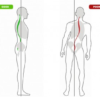
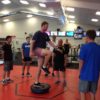
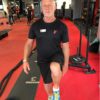
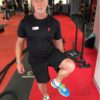
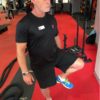
Recent Comments